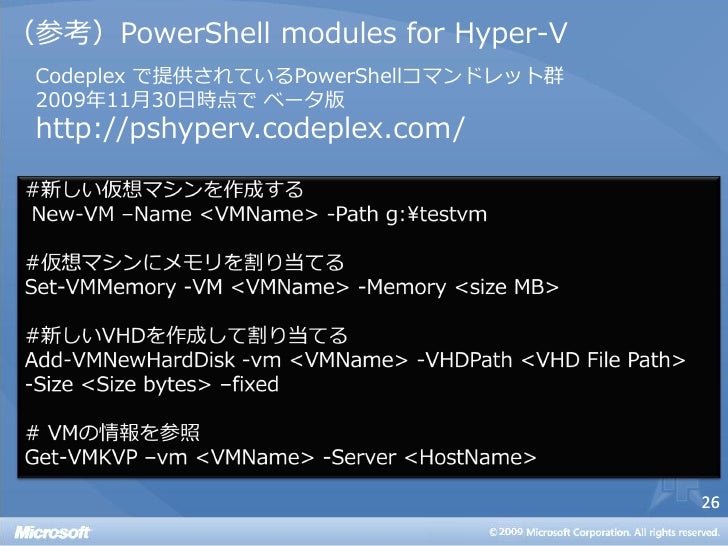
- #Windows server 2012 applocker powershell how to
- #Windows server 2012 applocker powershell software
- #Windows server 2012 applocker powershell windows 8
- #Windows server 2012 applocker powershell windows
In next window it allows to add exception but here i will not do any modificationsĨ. once selection is done click on next to continue.ħ. in here click on "Browse Folders" to select the path. In next window it allows you to select the file or the folder. In next window i need to select the condition. since i need to "deny" access the action will be "deny" and i will apply it to everyone in networkĥ. In next window i need to select the rule type and permissions. It will open the wizard, click next to continueĤ. Right click on "Executable Rules" containerģ. To do that i will be using the "Executable Rules" container rules.ġ. I need to block this application using APPLocker rule. In network i have WinRAR application installed in path "C:\Program Files\WinRAR". I will explain the procedure with the example. We can also create rules manually as per our requirement. Click on option "Automatically Generate Rules." then it will give you ability to review them and change them if required before create the rules.Ģ. once you specify a folder path, permission groups it will automatically analyze the selection and generate the rules. One of the grate option of applocker is its allow you to generate rules using wizard automatically.


Click on option "Create Default Rules" from the list These rules can simply create by using following steps,Ģ. by creating default rules in each of four containers will create the required rules which system needs it self. Microsoft made this easier by introdusing "Default Rules". it is not practicle to create rules manually for each of these.
#Windows server 2012 applocker powershell windows
But as we know windows system it self need files, applications, scripts etc. so make sure you start the service and set its startup type to "Automatic"īy default Applocket will block every package, file and script except the stuff which is allowed using rules. it works based on digital fingerprint of the application and it will work even name or the location of the application change.īefore AppLocker rules get to work you need to make sure "Application Identity" service is running. This type of rules kind of risky as if we given a folder path, any files in that particular folder affects from this rule.įile Hash: This criteria is apply to allow or block applications which is not digitally signed. Path : Using this criteria we can block or allow applications based on the specific folder or file path.

#Windows server 2012 applocker powershell software
Publisher: Using this criteria we can block or allow applications based on its digital signature publish by the software publisher. in each of these containers we can allow or block applications based on 3 criteria. Lets look in to furthure in to this nice feature.Īs explain in part 1 in group policy applocker container there are four nodes called executable rules, windows installer rules,script rules and packaged app rules. In Part 1 i have explain what is "AppLocker" and use of it. If you still not read the Part 1 you can find it in here. C:\PS>Get-AppLockerPolicy -Local | Set-AppLockerPolicy -LDAP "LDAP:// is the Part 2 of the AppLocker series. Gets the local AppLocker policy, and then merges the policy with the existing AppLocker policy in the GPO specified in the LDAP path. For information about performing Windows PowerShell commands for AppLocker, see Use the AppLocker Windows PowerShell Cmdlets.Īt the command prompt, type C:\PS>Get-AppLockerPolicy -Local | Set-AppLockerPolicy -LDAP "LDAP: // " -Merge where specifies the LDAP path of the unique GPO. To merge a local AppLocker policy with another AppLocker policy by using LDAP paths For the procedure to do this, see Merge AppLocker Policies Manually. You can also manually merge AppLocker policies.
#Windows server 2012 applocker powershell how to
If the Merge parameter is not specified, then the new policy will overwrite the existing policy.įor information about using Set-AppLockerPolicy, including syntax descriptions and parameters, see Set-AppLockerPolicy ( ).įor information about using Windows PowerShell for AppLocker, including how to import the AppLocker cmdlets into Windows PowerShell, see Use the AppLocker Windows PowerShell Cmdlets. The merging of policies will remove rules with duplicate rule IDs, and the enforcement setting specified by the AppLocker policy in the target GPO will be preserved. When the Merge parameter is used, rules in the specified AppLocker policy will be merged with the AppLocker rules in the target GPO specified in the LDAP path. If no Lightweight Directory Access Protocol (LDAP) is specified, the local GPO is the default. The Set-AppLockerPolicy cmdlet sets the specified Group Policy Object (GPO) to contain the specified AppLocker policy.

This topic describes the steps to merge AppLocker policies by using Windows PowerShell in Windows Server 2012 and Windows 8.
#Windows server 2012 applocker powershell windows 8
Applies To: Windows 8.1, Windows Server 2012 R2, Windows Server 2012, Windows 8


 0 kommentar(er)
0 kommentar(er)
